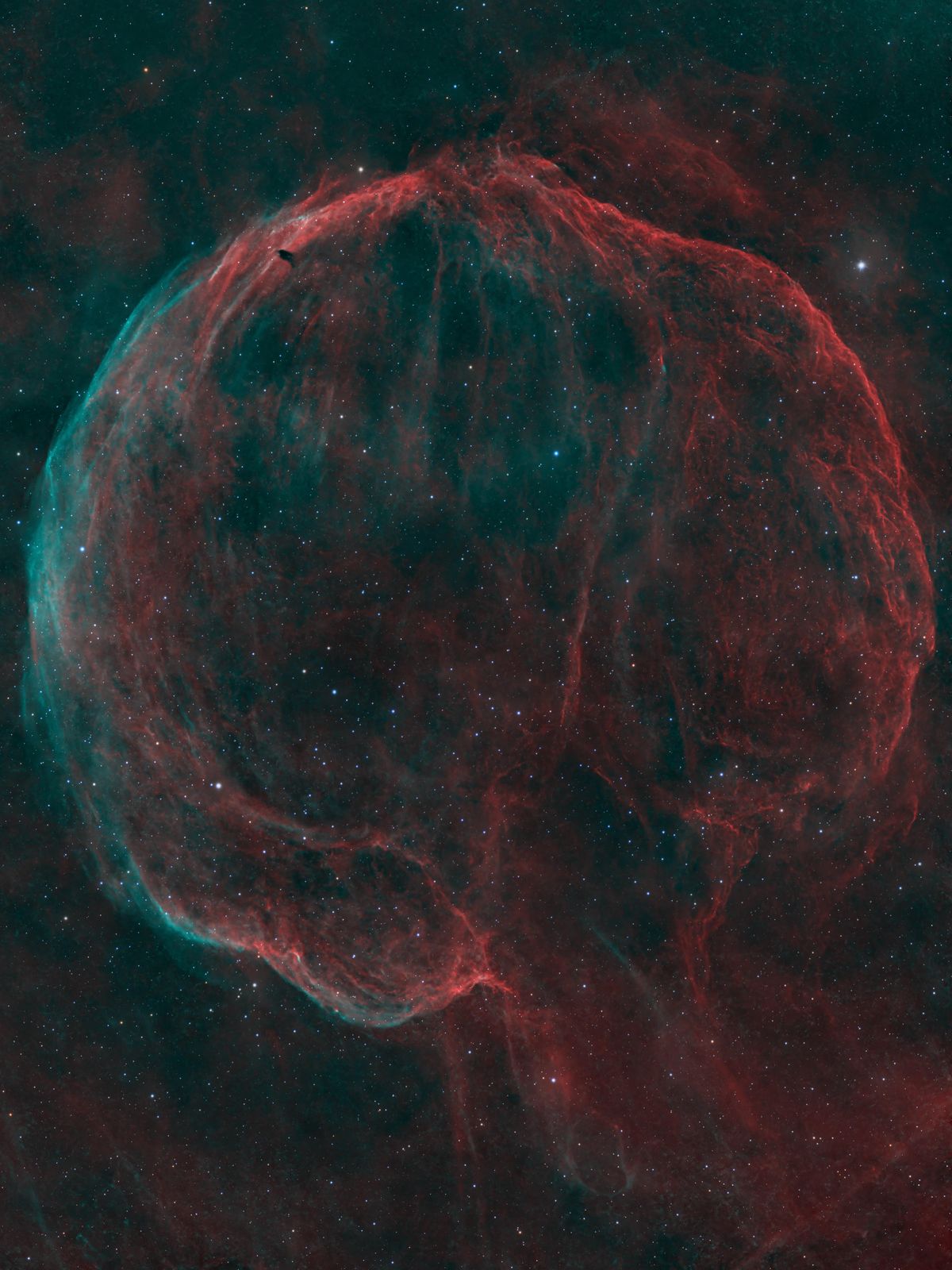Follow us on Google News (click on ☆)
The CTB 1 nebula, also nicknamed the Garlic Nebula or Medulla Nebula due to its evocative shapes, represents the expanding remains of a supernova. Located nearly 9,132 light-years from our planet in the constellation Cassiopeia, this gaseous structure unfolds within our galaxy, the Milky Way. Astronomers observe it at different wavelengths, from radio waves to X-rays, revealing how stellar materials ejected during the explosion interact with the surrounding interstellar gas.

The CTB 1 supernova remnant shines in deep space
Credit: David Joyce
The stellar explosion that gave birth to this cosmic remnant simultaneously created an extremely dense pulsar, discovered in 2009 by NASA's Fermi space telescope. This celestial object is moving at an impressive speed of 2.5 million miles per hour (4 million km/h), rapidly moving away from its birthplace. This discovery illustrates how the violent death of a massive star can give rise to new celestial objects with extraordinary properties.
David Joyce faced a considerable technical challenge to capture this image from his backyard in a suburban area, where light pollution makes astronomical observation particularly difficult. The astrophotographer dedicated more than 50 hours of exposure time to reveal the details of this particularly faint nebula, using a 20-centimeter (8-inch) Schmidt-Cassegrain telescope equipped with a specialized astronomical camera and various filters.
Creating this image required meticulous planning and seven clear nights last September. Joyce explains that he waited several years before being able to capture this celestial object.
Supernova remnants
Supernova remnants represent the gaseous structures that persist after the cataclysmic explosion of a massive star. These cosmic clouds expand into interstellar space at speeds reaching several thousand kilometers per second, forming expanding shells and bubbles of matter.
These structures play a fundamental role in the chemical enrichment of the Universe. Heavy elements created during the stellar explosion, such as iron, gold, or uranium, are scattered into the interstellar medium, contributing to the formation of new generations of stars and planets.
The study of supernova remnants allows astronomers to trace the history of stellar explosions in our galaxy. By analyzing their expansion and chemical composition, scientists can determine the age of the explosion, the mass of the original star, and the physical conditions prevailing in these extreme environments.
These celestial objects emit radiation across all wavelengths of the electromagnetic spectrum, from radio waves to gamma rays, making them natural laboratories for studying high-energy processes in the Universe.